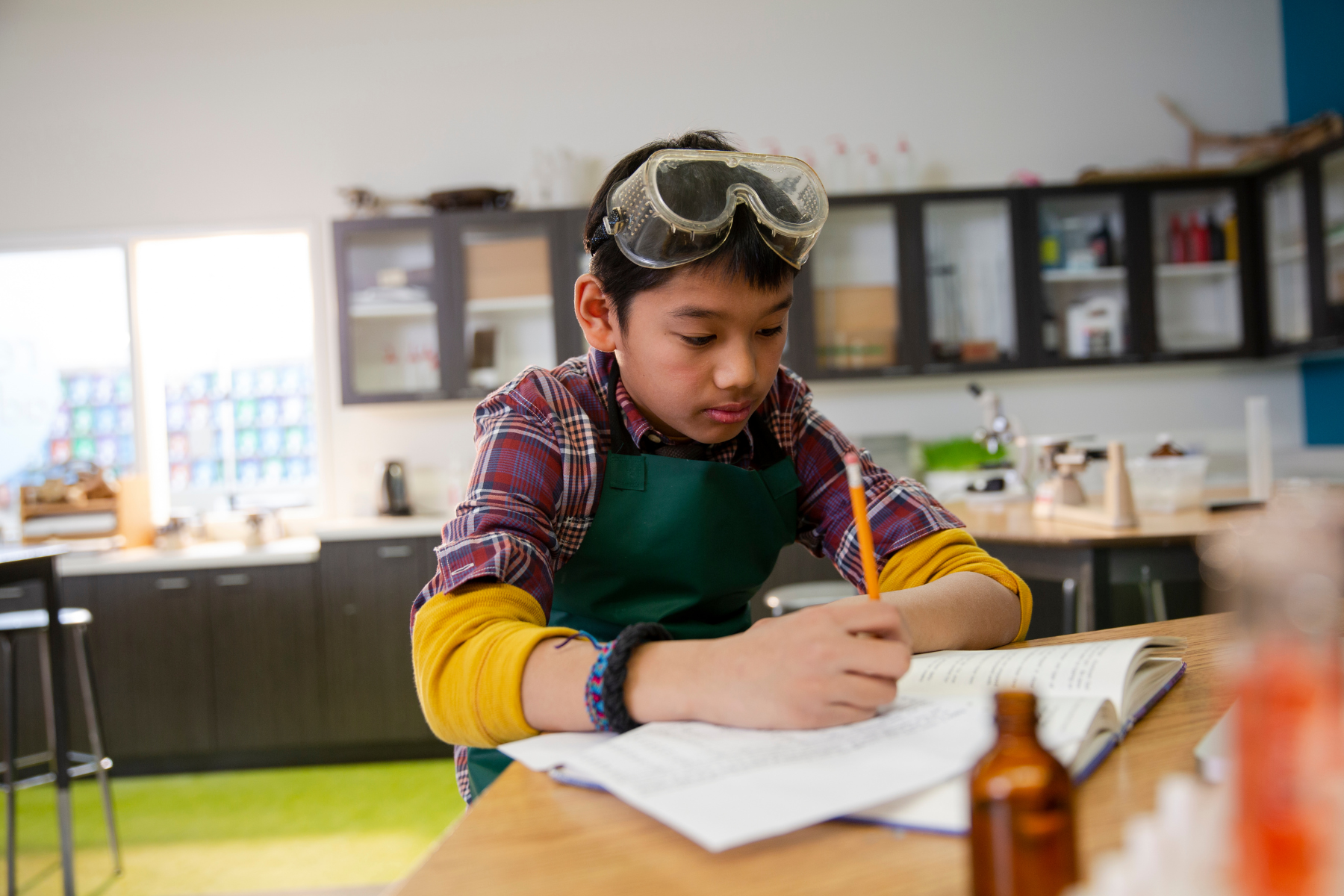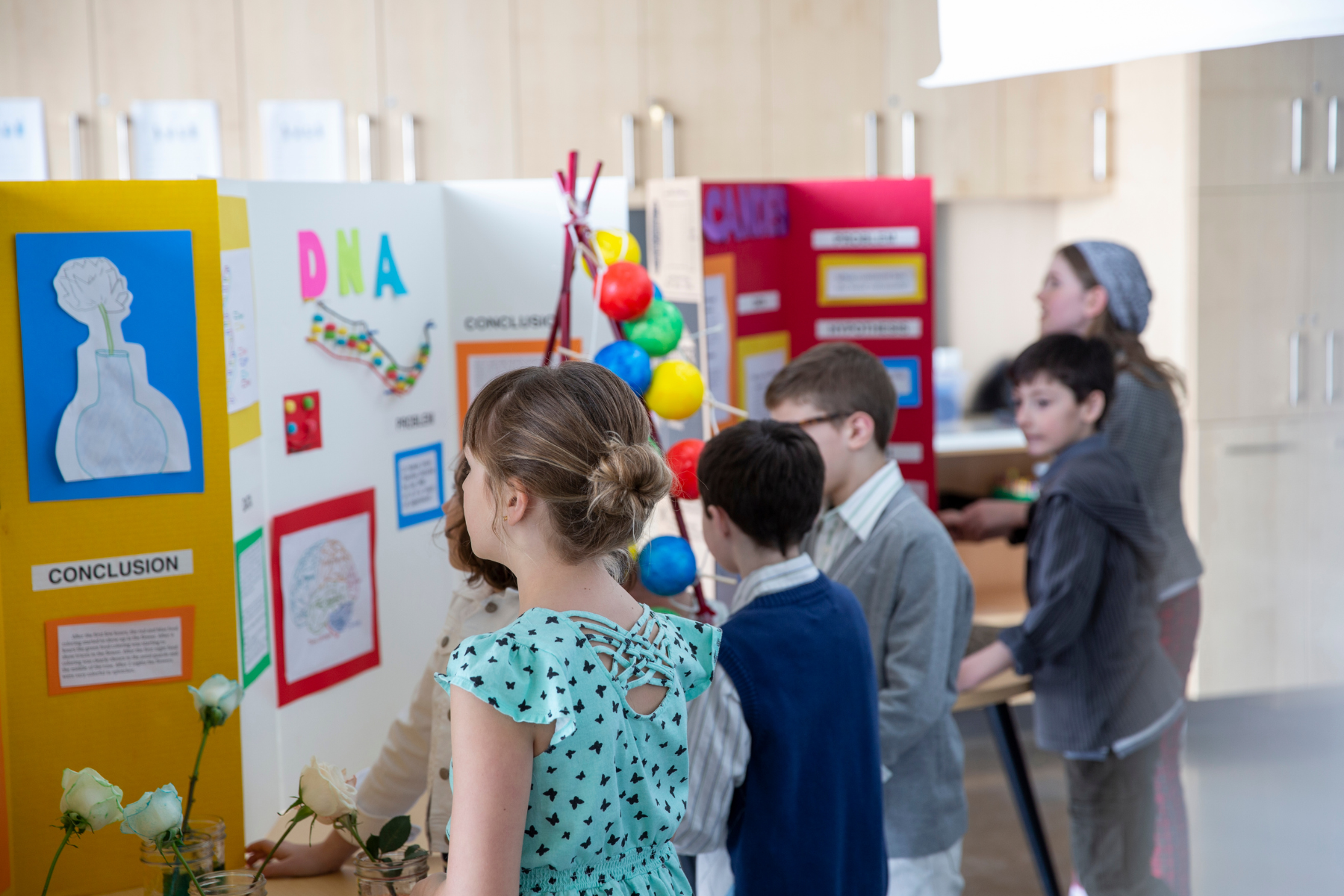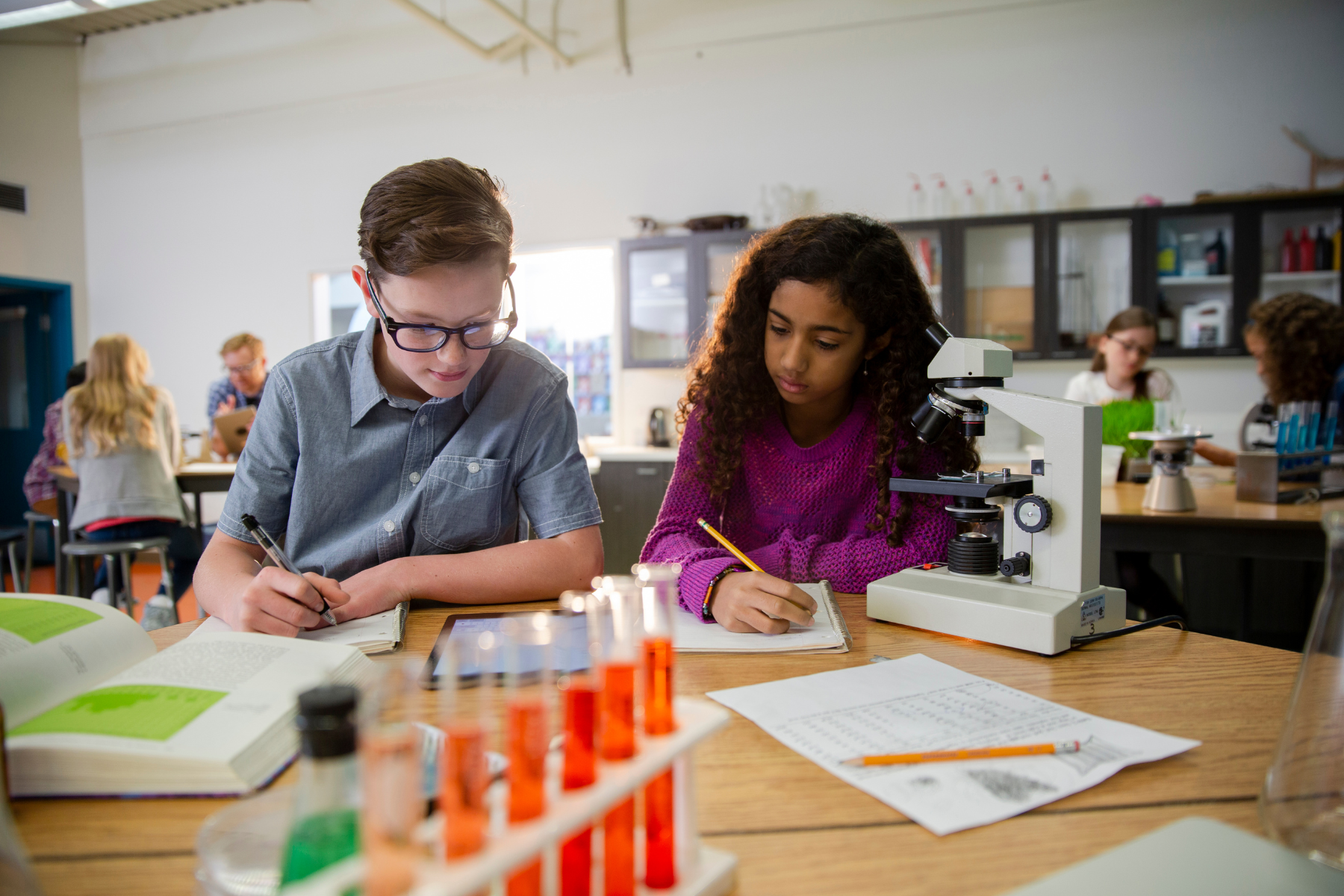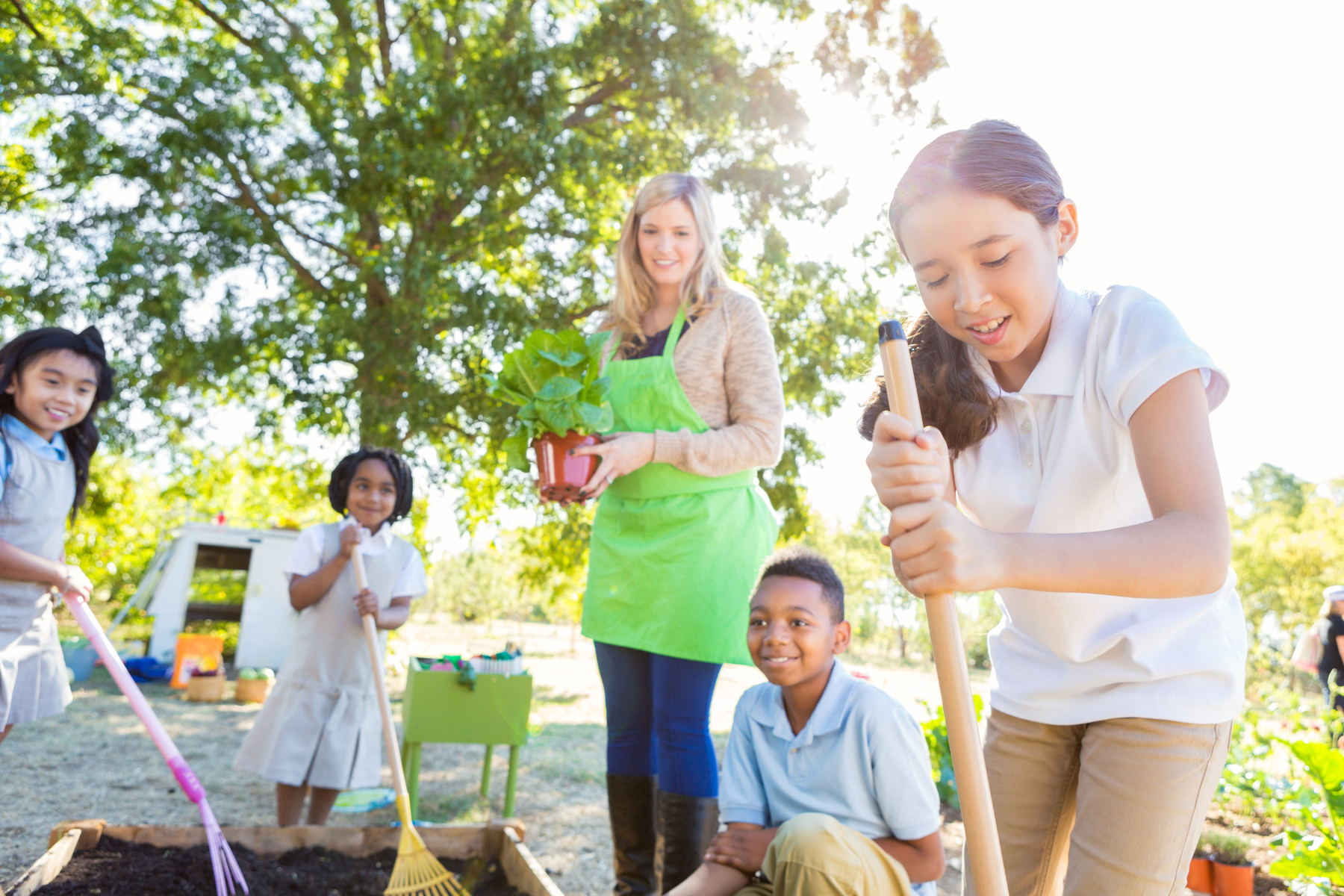On any given day in 2018, you could walk into my science classroom and see my students doing the following: competitively measuring the growth of their soybean plants, self-assuredly identifying the macroinvertebrates in the river behind the school, “accidentally” landing their rockets on the school roof, earnestly searching for tardigrades under the microscope, and building trebuchets to launch ping pong balls down the hallway.
Rest assured; this was not chaos: this was encouraged best practice. The National Science Teaching Association (NSTA) had told science teachers that kids learn science best through a hands-on, interactive, student-centered, and inquiry-based approach (see NSTA Position Statement). What’s more, the National Academies of Sciences, Engineering, and Medicine published a report in 2007 that emphasized the importance of K-12 STEM learning as a critical factor for enhancing the nation’s competitiveness and prosperity (Rising Above the Gathering Storm: Energizing and Employing America for a Brighter Economic Future). The report asserted the highest priority was to revitalize K-12 science and mathematics education. As science teachers, we were to enlarge the pool of students prepared to enter college and graduate with STEM degrees, increase student interest and engagement in STEM subjects and careers, and create new learning environments aligned with how students learn best. The report argued that these actions would help the U.S. to produce a world-class STEM workforce, foster a culture of scientific and technological innovation, and enhance the quality of life for all Americans. After years of de-prioritization—see, for example, a 2108 NSSME+: Trends in U.S. science education survey that reported teachers were spending only an average of only 20–25 minutes per day teaching science—the subject was finally getting a seat at the table!
Fast-forward to spring 2021. My students and I had been sent home for the rest of the school year. The potatoes we were growing in Martian soil had withered, and so had the student engagement. I tried to maintain the same level of excitement and interest we had in the classroom, but it felt impossible. Kids needed to have specific supplies in their homes. Only some people showed up for virtual classes. In desperation to keep science instruction going, I bought foldscopes and told parents they could pick them up at the school—anything to keep the magic alive. Like many science teachers, I asked myself how online science teaching would work. And I worried just how much my students were learning.
Amid talk that the pandemic had devastated students’ math and reading learning, some sources began to confirm my worst fears. There were reports that science education had become a lower priority in districts, and some key activities and supports were bring delayed or limited The Impact of COVID-19 on Science Education. Elsewhere, though, there were glimmers of hope. Teachers everywhere had found new ways to enhance student communication and collaboration, such as using apps, videos, webinars, and online labs (New approaches for teaching science remotely arise from the COVID-19 crisis). Taking their cues from prior research that suggested integrating science instruction into other disciplines has the potential to yield a range of benefits, some enterprising educators took the opportunity to do so, incorporating science content into subjects such as math and language arts. According to WHO in STEM Integration in K-12 Education: Status, Prospects, and an Agenda for Research, those benefits may include: increased understanding, retention, and application of general concepts across the STEM subjects; better overall comprehension of global interdependencies, along with the development of multiple perspectives and points of view, as well as values; increased ability to make decisions, think critically and creatively, and synthesize knowledge beyond the disciplines; enhanced motivation, interest, and engagement in STEM learning and careers; and improved literacy skills through reading, writing, and communicating about science-related topics. Faced with both challenges and opportunities, what would become of science?
Fast-forward again, this time to the present day. I now work for the Institute of Education Sciences, the non-partisan research, evaluation, and statistics branch of the U.S. Department of Education. My work focuses on elevating evidence-based practices for out-of-school-time learning—particularly emergent practices that may help get our students back on track—and encouraging high-quality research to deepen the evidence base. And, I read a lot about the state of student performance and learning recovery nationwide.
When IES released the most recent National Assessment of Educational Progress scores, some of my questions about the impact of the pandemic on student learning were answered. Like many, I was saddened but unsurprised. For the first time since the test began tracking student achievement in the 1970s, 9-year-olds lost ground in math, and scores in reading fell by the most significant margin in more than 30 years. According to the 2022 NAEP data, students across the country have fallen behind by up to six months in math and three months in reading, worsening the existing academic gaps for the most disadvantaged students.
Given the scores for math and reading, I am afraid to find out how science fared. After all, we know that science scores weren’t exactly stellar pre-pandemic (see, for example, NAEP Report Card: 2019 NAEP Science Assessment (nationsreportcard.gov). Luckily, I won’t have to wait long to find out. NAEP is assessing 8th grade Science as we speak … see NAEP 2024 Facts for Principals – Grade 8 Science (ed.gov). We’ll learn more about what students know and can do in the physical sciences, life sciences, and earth and space sciences (What Does the NAEP Science Assessment Measure?). I’m hopeful that the pandemic hasn’t affected science like it did math and ELA, but I’m also a realist. If scores declined (heck, even if they’re steady) how should educators react?
There are lessons to be learned, I think, in how state education agencies and school districts have addressed learning acceleration in other subjects. Specifically, many have turned to tutoring as one way to bolster student performance in math and ELA. The evidence points to a specific approach to tutoring, high-dosage/high-impact tutoring typified by one-on-one or small group instruction occurring three times weekly for 50 hours per semester, as being perhaps the most effective. (A 2016 Harvard study found that high-dosage tutoring was 20 times more effective for math and 15 times more effective for reading instruction than standard tutoring models!)
However, data from IES’s School Pulse Panel show that—at least for the 2022-2023 school year—high-dosage tutoring in science is rare. Among schools offering high-dosage tutoring, 83% offered it in mathematics and 97% offered it in English/language arts. However, only 22% offered it in the sciences. Students certainly need help in math and reading, as both are foundational skills for all types of learning. But science may, yet again, be getting lost in the process.
To keep science’s seat at the table in conversations about learning recovery and acceleration, it may be time to link high-dosage tutoring in science with another practice that has shown promise for improving students’ academic outcomes: afterschool and out-of-school time (OST) programs. With only so many hours in the school day, OST programs are the perfect venue to support students’ science learning.
As a reminder (and in full disclosure), my role at IES is to advance efforts to use and build evidence in OST programs—so perhaps it’s no surprise that I see a role for these programs in delivering high-dosage tutoring to students who most need it. But tutoring notwithstanding, the research on OST programs is promising in and of itself. The Education Trust’s research shows that extending the time students spend on instruction can benefit students of all ages, backgrounds, and subjects. This creates a special chance to build collaborations between schools and other organizations that offer afterschool and summer programs. These partnerships can help schools and communities work together to help students catch up and learn faster.
Research is telling me one of our best bets right now is OST STEM programs. These OST STEM programs are structured educational activities that take place outside of the regular school hours, such as in the evenings, weekends, or summers. They can complement formal classroom education by providing additional opportunities for students to practice their STEM skills, explore their interests, and discover new possibilities for their futures. Well-designed, well-executed, evidence-based afterschool and summer programs have the potential to help students post-pandemic by providing them with social-emotional support, additional learning time and support, and favorable conditions for learning and re-engagement. While the pandemic negatively impacted learning in STEM subjects (1), increasing investments in quality afterschool STEM programs will help reengage youth by offering all learners opportunities to build perseverance and agency, by stimulating career interests through fostering a sense of identity and belonging in STEM, by building STEM-specific knowledge and skills, and by providing joyful learning experiences that demonstrate the relevance and applicability of STEM in daily life. The research is impressive:
After-school settings give youth opportunities to learn through problem-solving and to fail without fear. Hands-on engagement is one of the distinguishing characteristics of after-school, which can help bring STEM to life and motivate inquiry, reasoning, hypothesizing, experimenting, and problem-solving (2). These experiences are crucial for developing the persistence that STEM fields require (3). After-school STEM programs can spark student interest in STEM topics and careers. They are also uniquely situated to support youth historically underrepresented in STEM learning experiences (4,5). Highly engaging STEM activities can spark interest, build self-confidence, and nurture a sense of belonging in STEM fields, especially when program staff reflect the identities of the youth served.6 After-school STEM programs offer flexibility for intertwining emotional, aesthetic, and social elements into learning activities in ways not as easily accommodated by schools (3,7). These learning opportunities can appeal to youth who may be disengaged or struggling with traditional classroom instruction (8). They also offer spaces for youth-led solutions to real-world problems, all while developing a new generation of problem solvers in STEM fields (6). For more information about the research, read Afterschool STEM Programs: A Vital Investment.
Bringing high-dosage tutoring into the mix only strengthens the potential of OST programs to support students’ science learning.
Others are thinking along the same lines. New Jersey’s Afterschool & Out-of-School Time Professional Network recently released a guide for schools outlining their approach to strengthening tutoring via OST programs New ESSER Funding Toolkit – NJSACC. They argue:
- Afterschool and OST programs are positioned to supplement school day learning. The consistency required for the high-dosage tutoring model fits with the afterschool environment.
- Tutoring succeeds when there is a strong tutor-student relationship. Afterschool and OST programs can provide staff that makes this personal connection possible.
- The most effective expanded learning time curricula use lesson plans aligned with the regular school day. Community-based partnerships allow for communication between teachers and tutors to tailor instruction, address the needs of specific students, share resources, and use common benchmarks for success, including alignment with a school’s multi-tiered system of supports (MTSS).
- While school attendance issues can hinder student progress in tutoring, afterschool programs have been proven to increase attendance. Afterschool and OST programs can provide new ways to explore curricula and create programming that is fun and exciting to encourage regular attendance.
As a robotics coach and STEM camp instructor, I saw a special kind of magic in OST. There was no fear of failure, no worry of tests and grades—just joyful exploration and engagement. There are no report cards, principal observations, or standardized tests—just joyful, exciting, authentic experiences.
From my vantage point at IES, I still see the potential of STEM-focused OST. But I am more keenly aware than ever that the current moment represents an opportunity–and an obligation–to not only use evidence-based practice but to build additional evidence about “what works” in OST STEM to support student achievement and development. Innovation can propel high-quality OST STEM forward. High-quality research to demonstrate its effectiveness and to improve its delivery will sustain it.
A teacher friend shared the following sentiment: “The priority for early elementary has to be reading right now … When reading is better, then we can worry about math. Science is not on the list of priorities right now. We’re in catch-up mode still.” I understand the challenges and frustrations expressed here. If your student can’t read or add, you’re less concerned about their love of the natural world.
My friend is right, of course, but still, I’m advocating caution. Although it has taken years to be widely acknowledged, it’s clear to many that, now more than ever, students deserve (and our nation needs) high-quality STEM instruction. At a time when the focus has understandably turned to accelerating student learning in math and reading, science can’t lose its seat at the table. Increasingly, I’ve come to believe that one way to keep it is to think creatively about all the ways science learning can be supported, both in and out of the school day.
This blog was written by Dr. Holly Miller, Advisor for Afterschool and Summer Learning in the Institute of Education Sciences at the US Department of Education
***
Works Cited
- Irwin, V., Wang, K., Tezil, T., et al. (2023). Report on the condition of education 2023 (NCES 2023-144). U.S. Department of Education, National Center for Education Statistics. https://nces.ed.gov/pubsearch/pubsinfo.asp?pubid=2023144
- National Academies of Sciences, Engineering, and Medicine. Identifying and Supporting Productive STEM Programs in Out of School Settings. (2015). National Academies of Sciences, Engineering, and Medicine Consensus Study Report. https://nap. nationalacademies.org/catalog/21740/identifying-and-supporting-productive-stem-programs-in-out-of-school-settings
- Allen, P.J., Chang, R., Gorrall, B.K. et al. (2019). From quality to outcomes: a national study of after-school STEM programming. IJ STEM Ed, 6 (37). https://doi.org/10.1186/s40594-019-0191-2
- King, Natalie S. and Pringle, Rose M. (2019). Black Girls Speak STEM: counterstories of informal and formal learning experiences. Middle and Secondary Education Faculty Publications. 144. https://doi.org/10.1002/tea.21513
- Morton, C., and Smith-Mutegi, D. (2022). Making “it” matter: developing African-American girls and young women’s mathematics and science identities through informal STEM learning. Cult Stud of Sci Educ 17, 39–52. https://doi.org/10.1007/ s11422-022-10105-8
- Zhao, M., Mathews, C. J., Mulvey, K. L., et al. (2023). Promoting diverse youth’s career development through informal science learning: the role of inclusivity and belonging. Journal of youth and adolescence, 52(2), 331–343. https://doi.org/10.1007/ s10964-022-01694-2
- Habig, B., Gupta, P., Levine, B. et al. (2020). An informal science education program’s impact on STEM major and STEM career outcomes. Res Sci Educ, 50, 1051–1074. https://doi.org/10.1007/s11165-018-9722-y
- Schmidt, J., Beymer, P., Rosenberg, J., et al. (2020). Experiences, activities, and personal characteristics as predictors of engagement in STEM-focused summer programs. J Res Sci Teach, 57, 1281–1309. https://doi.org/10.1002/tea.21630






